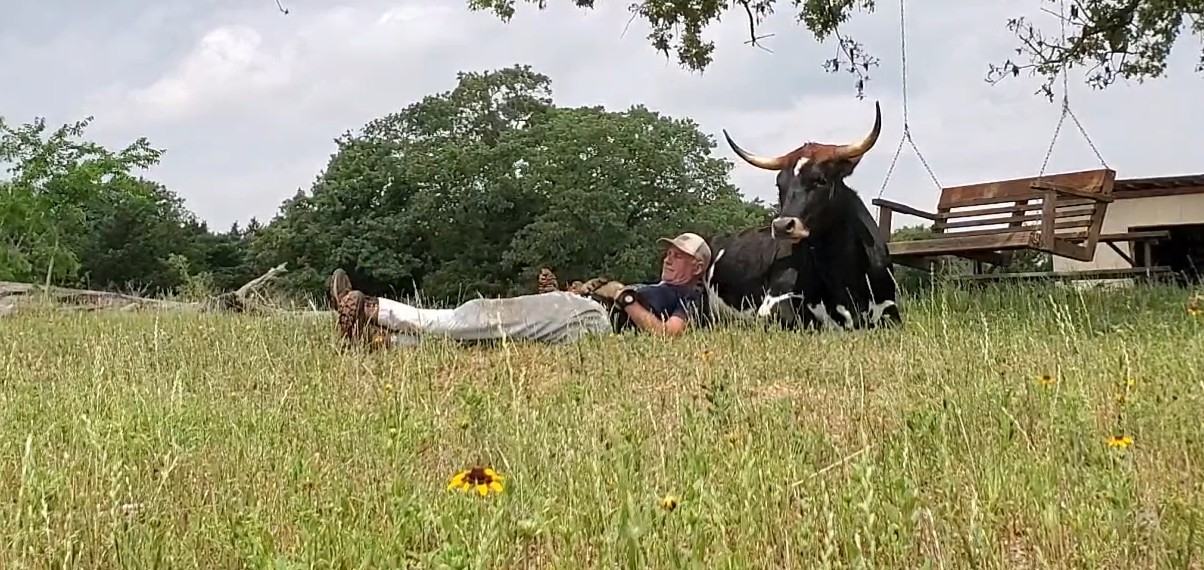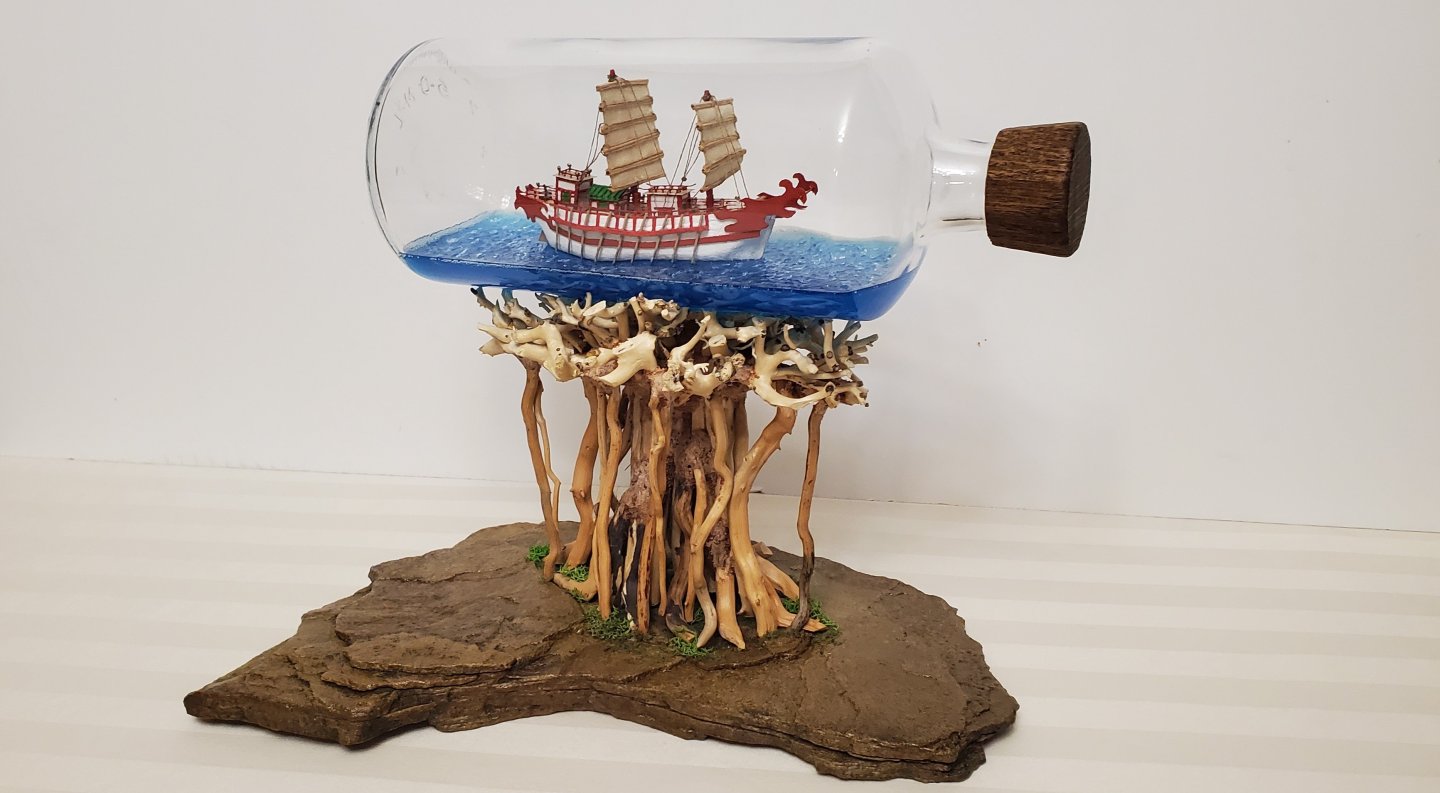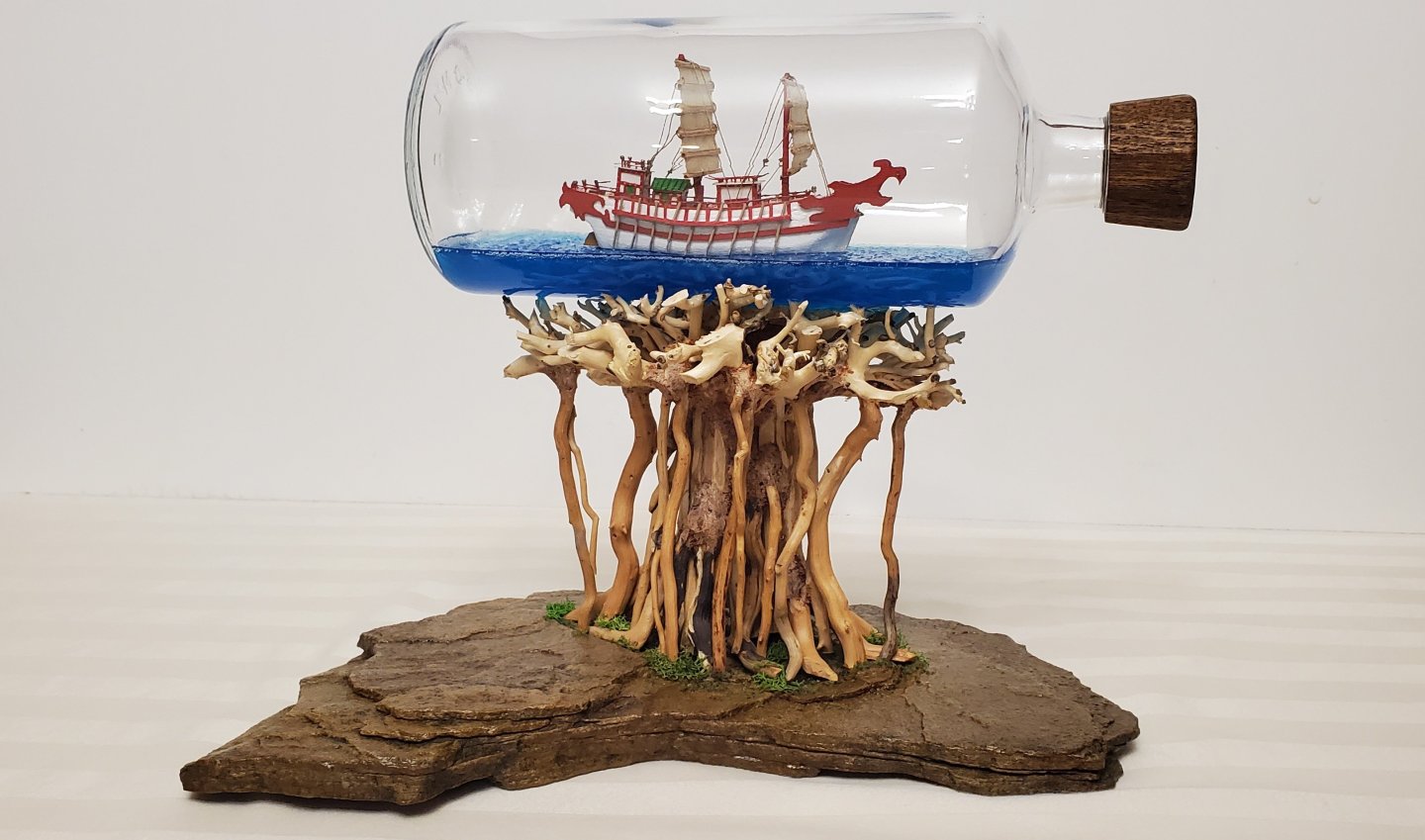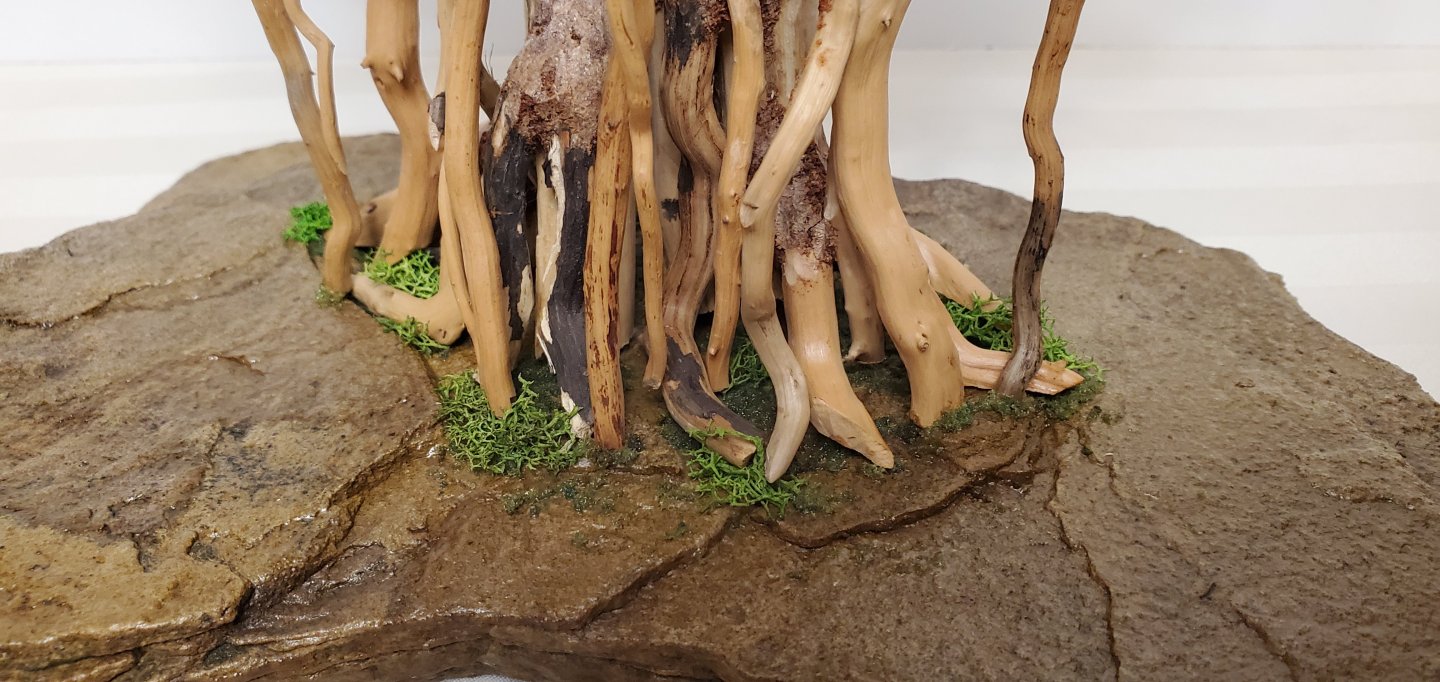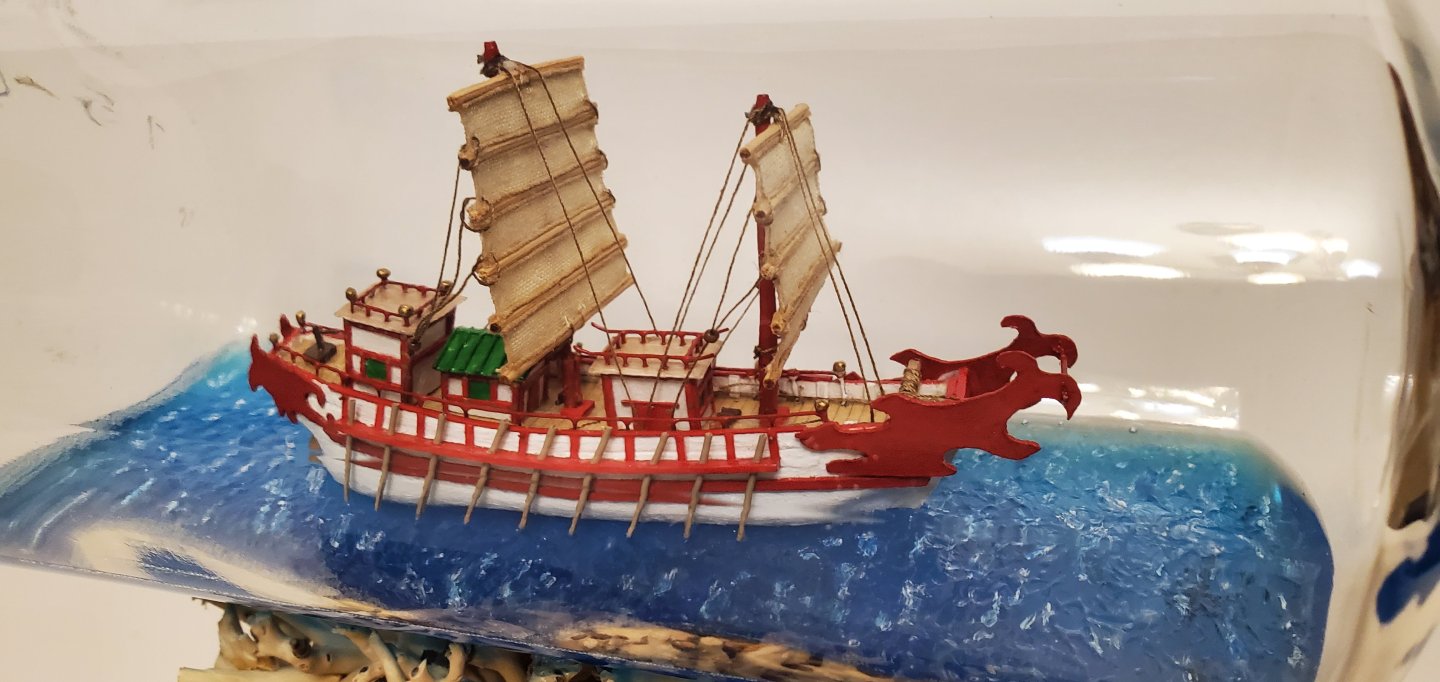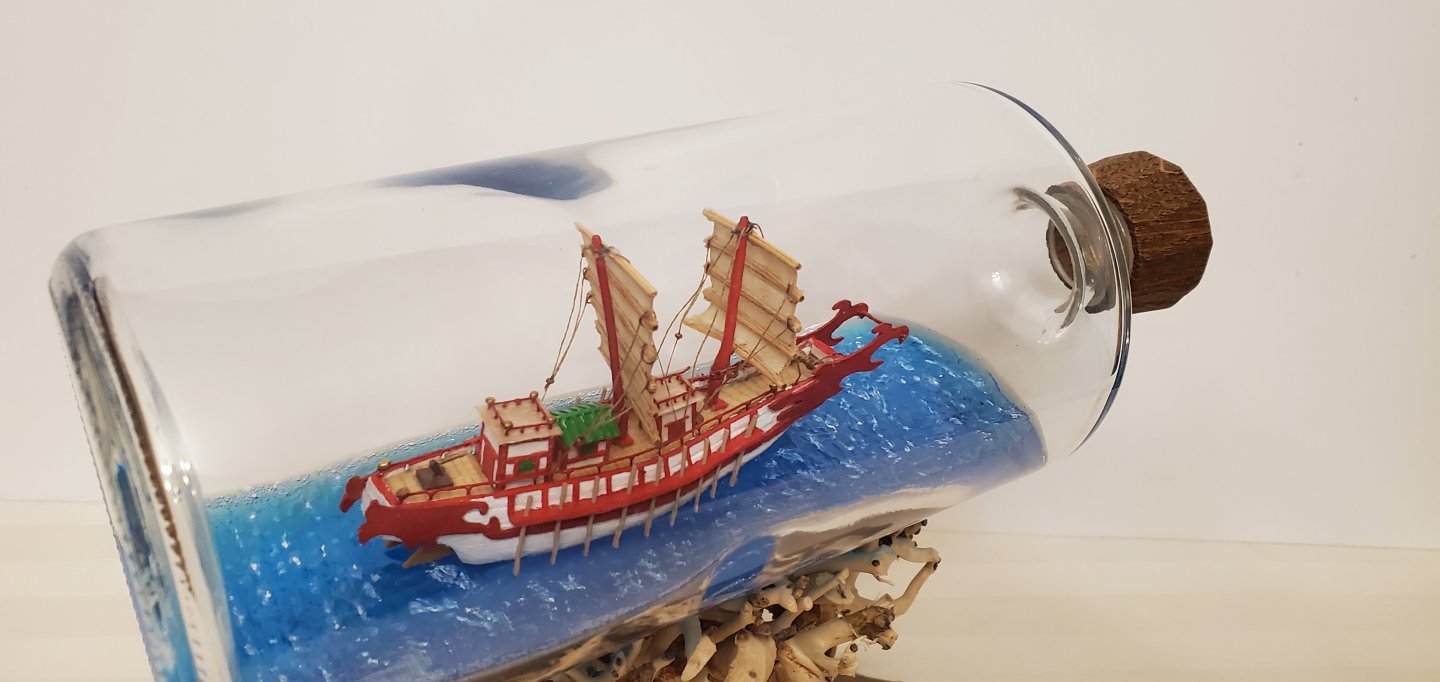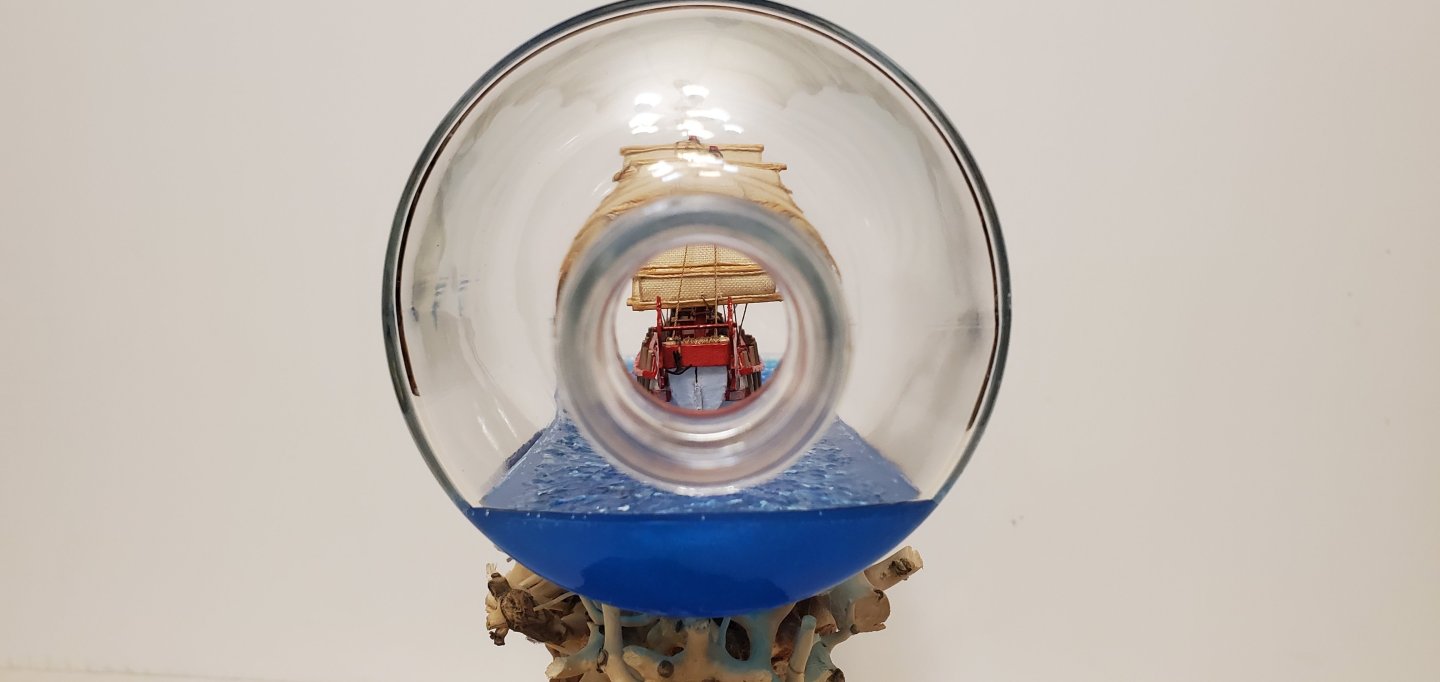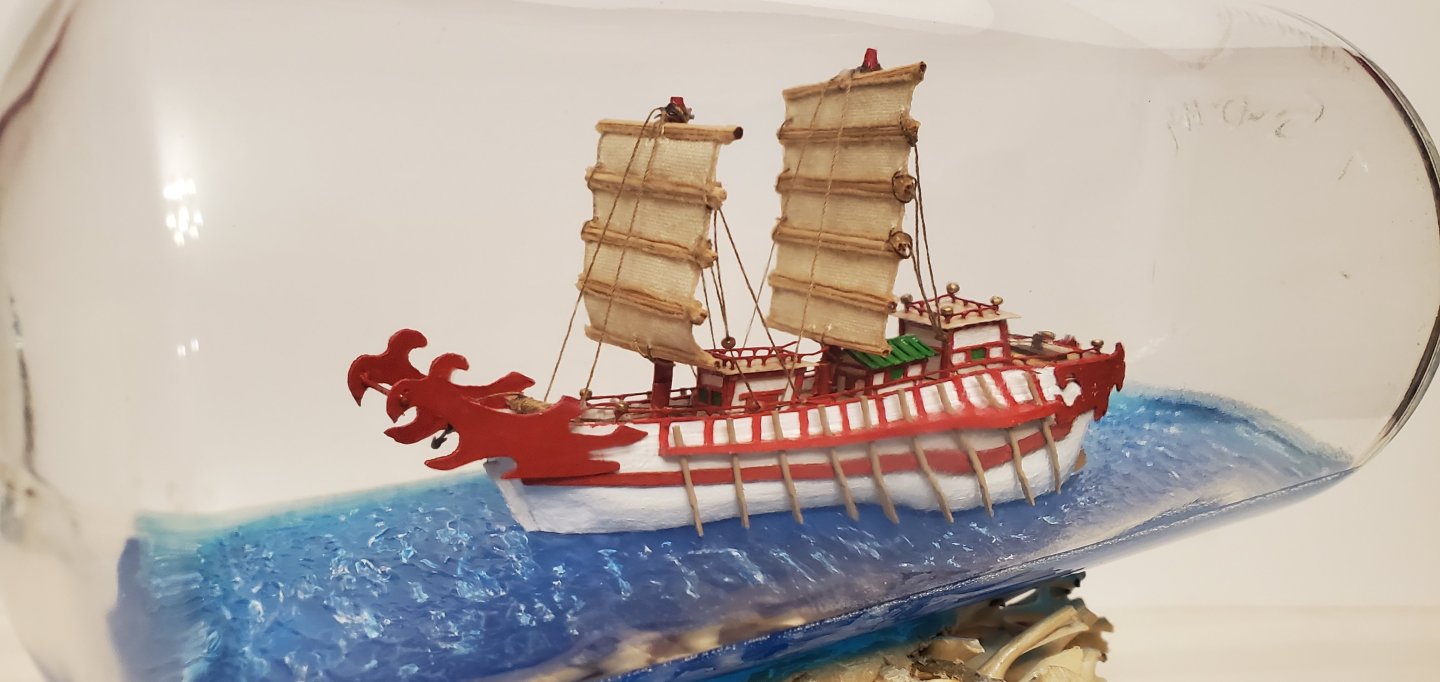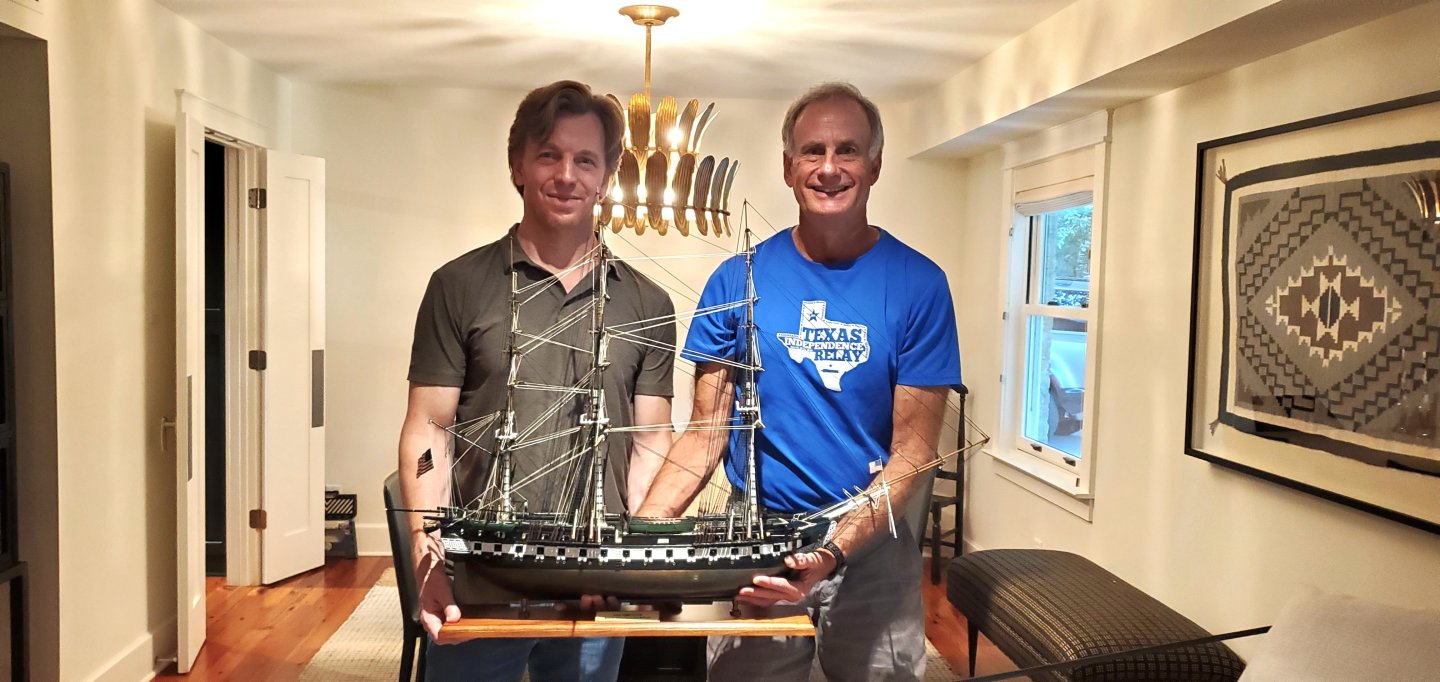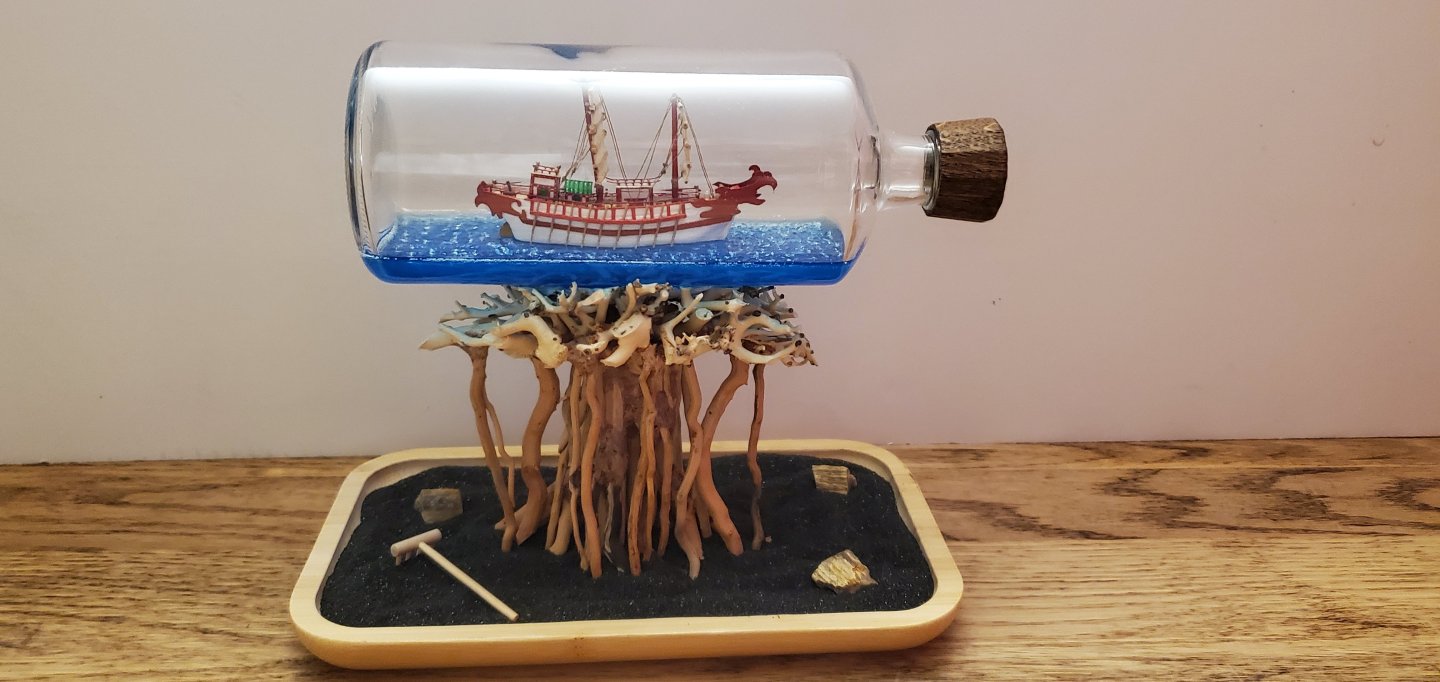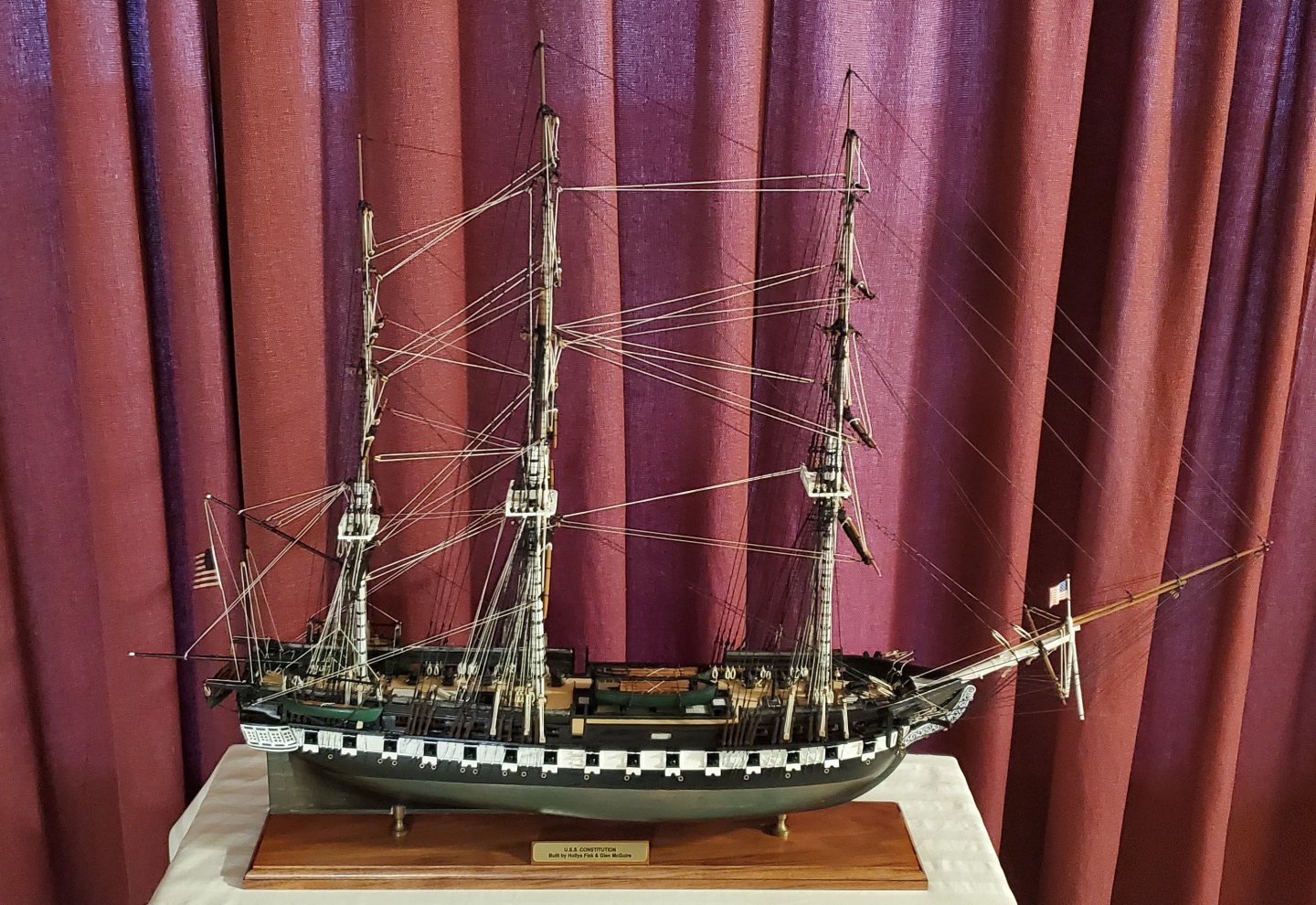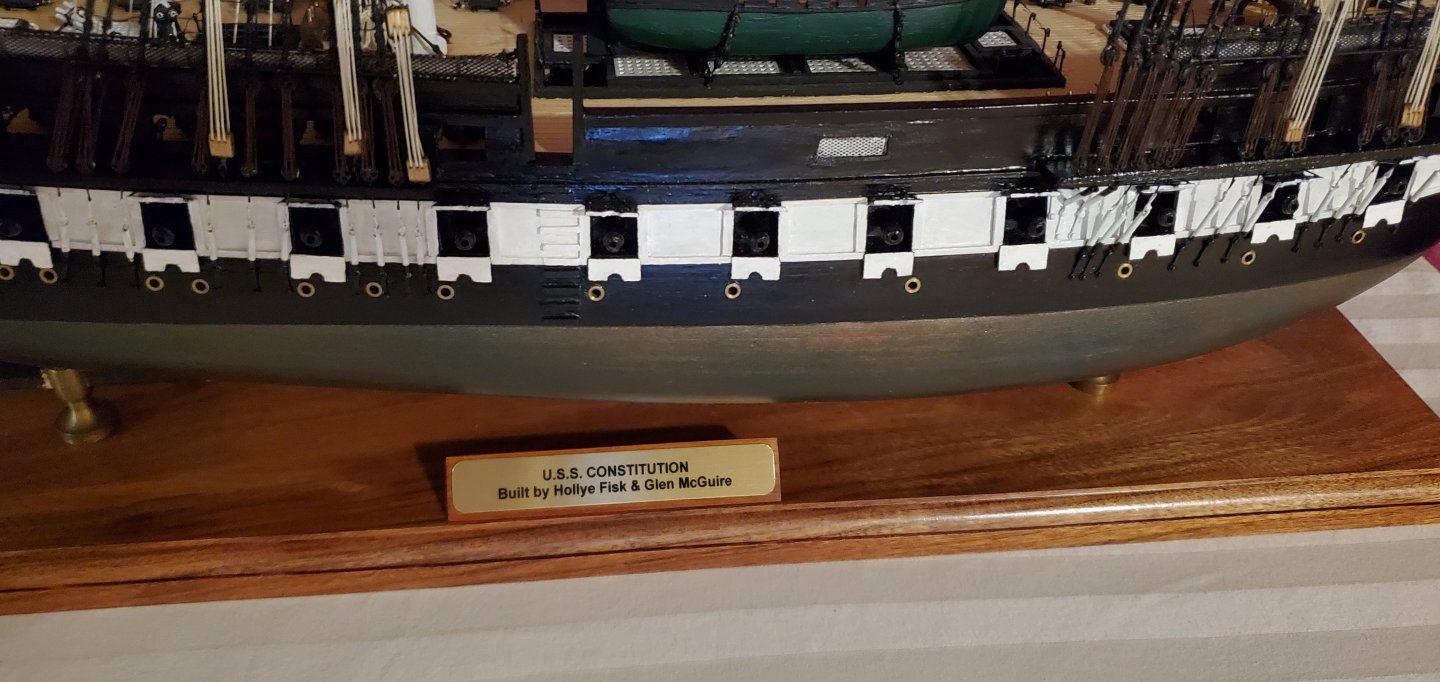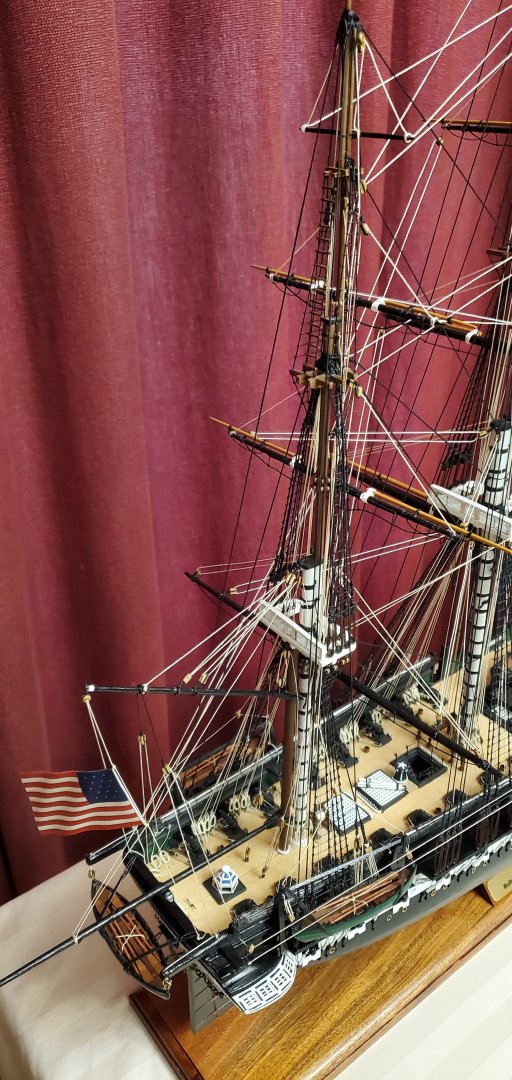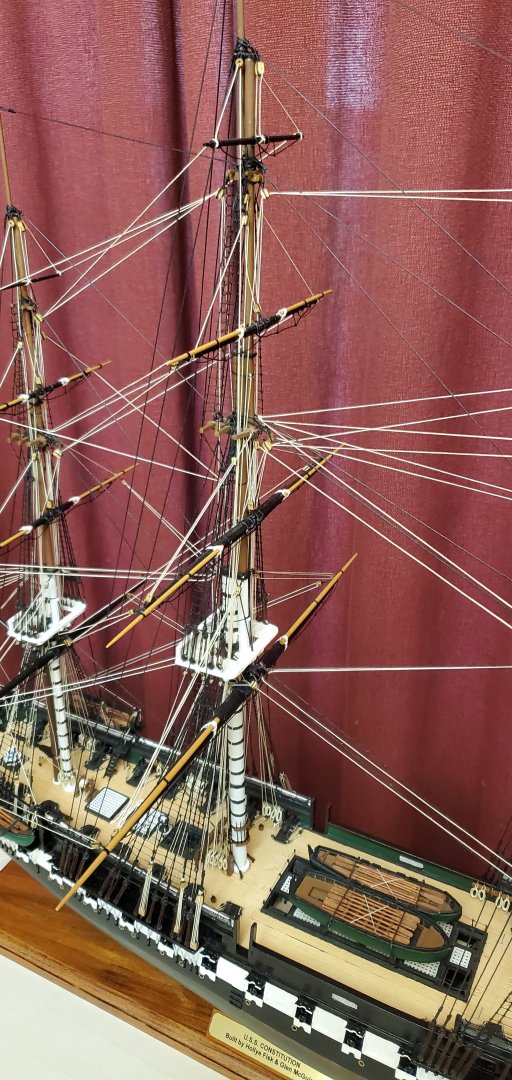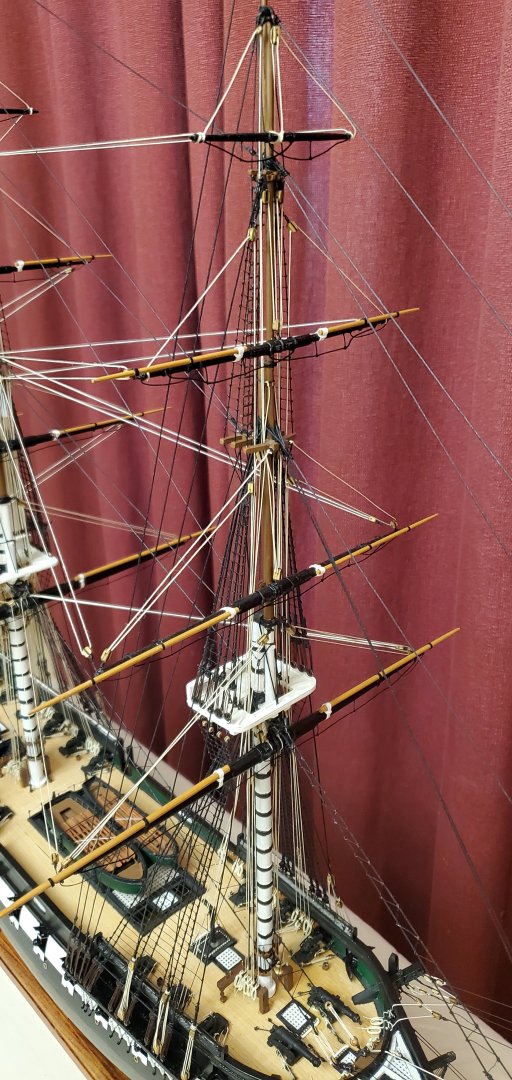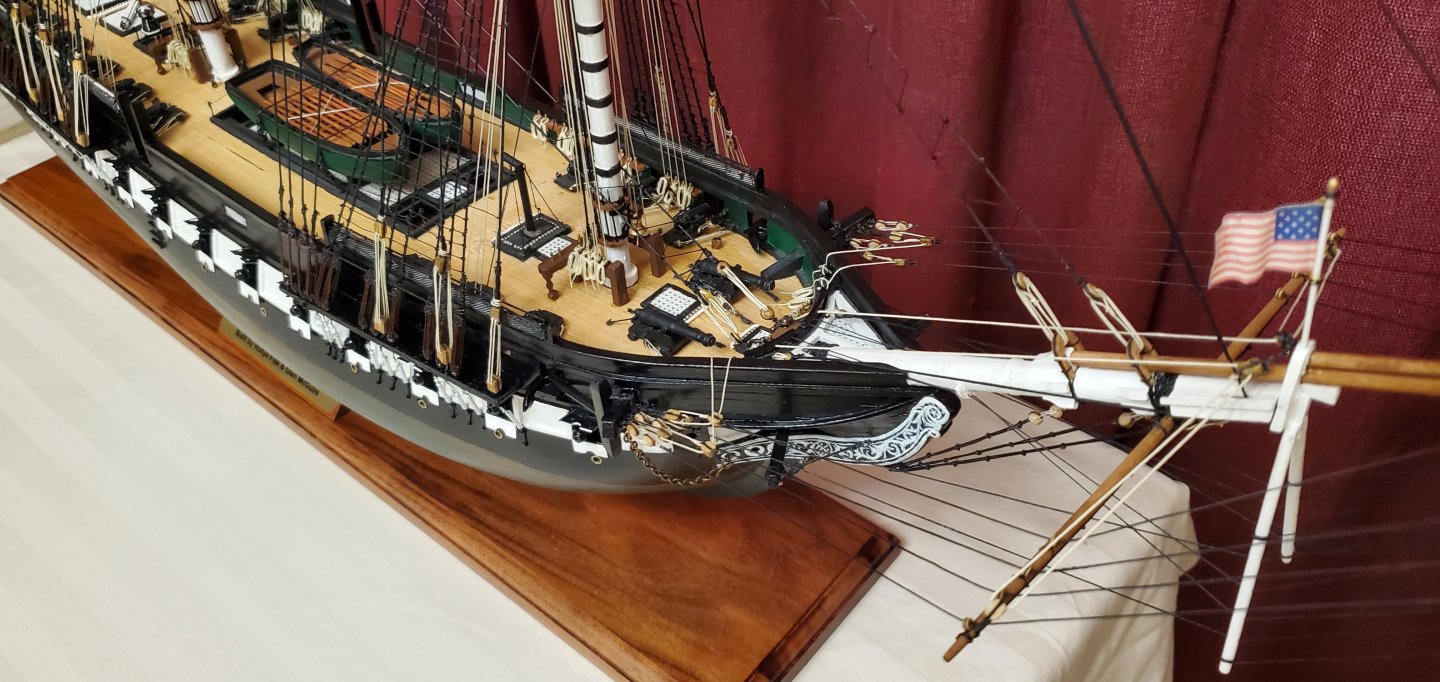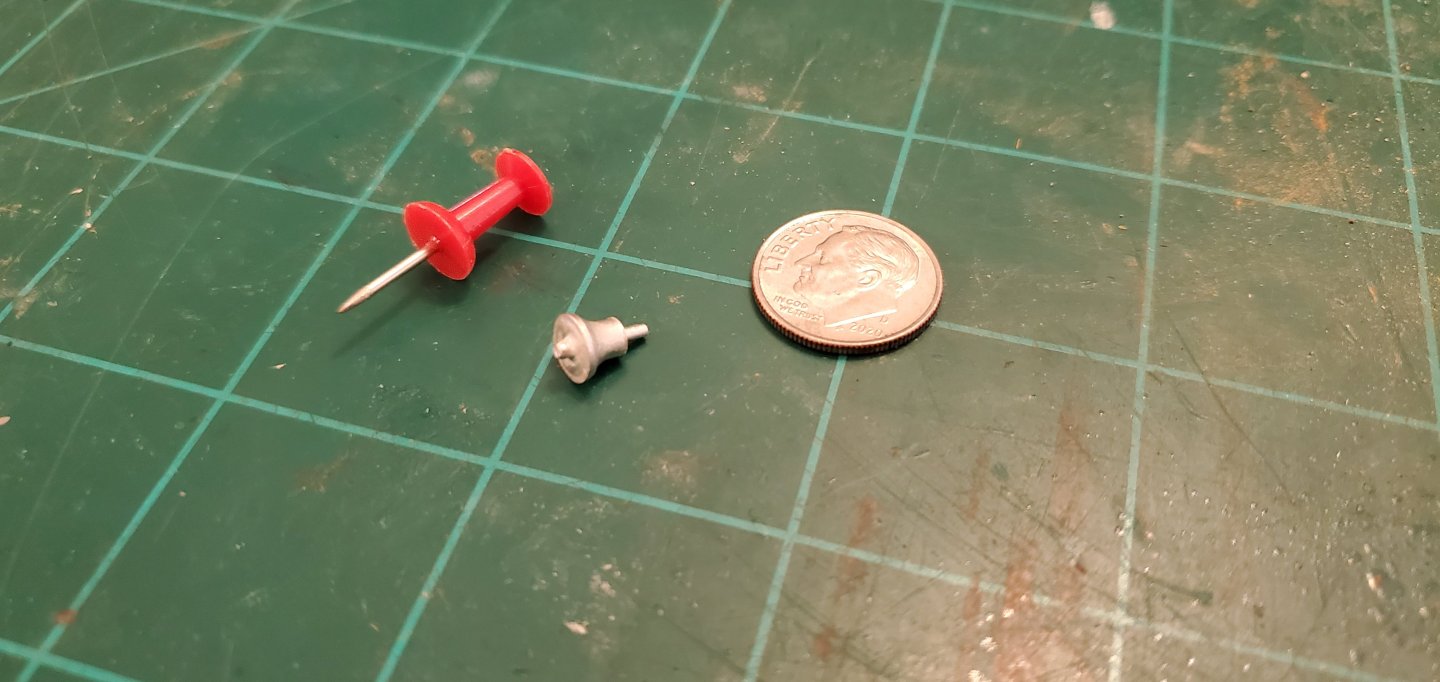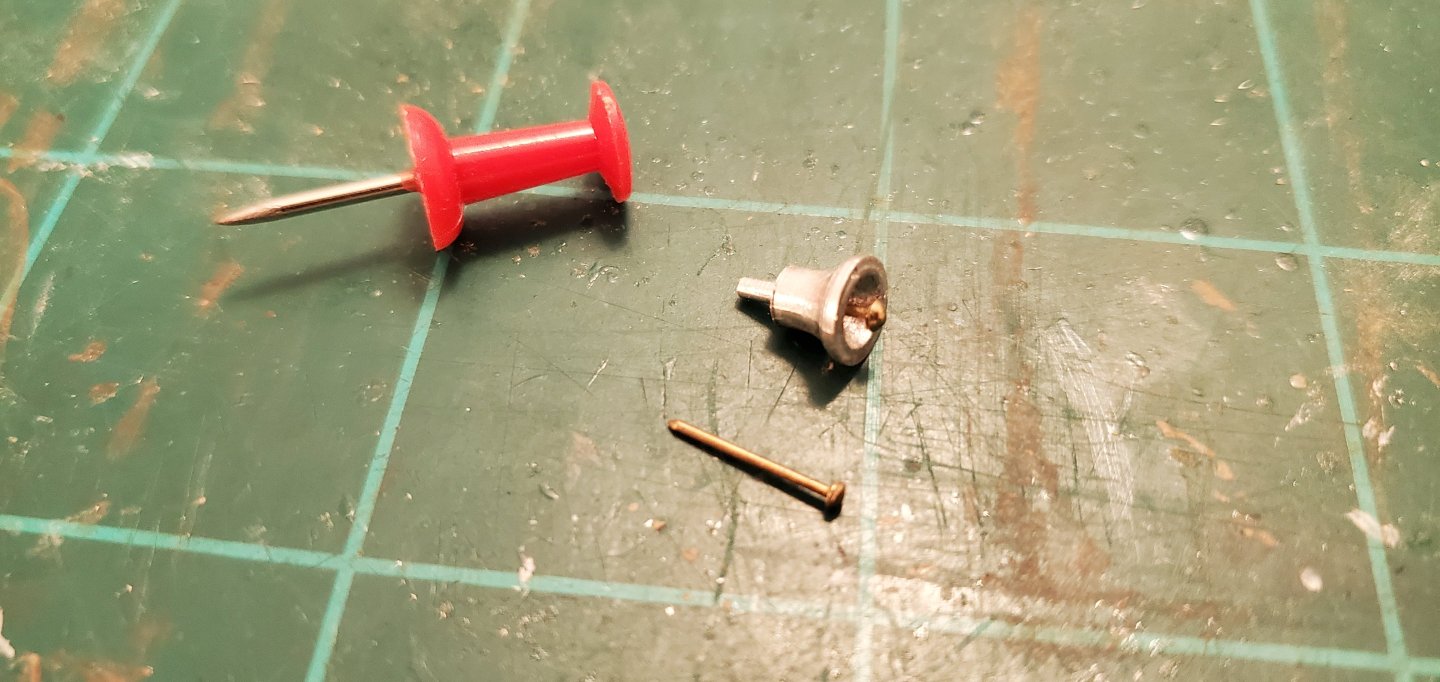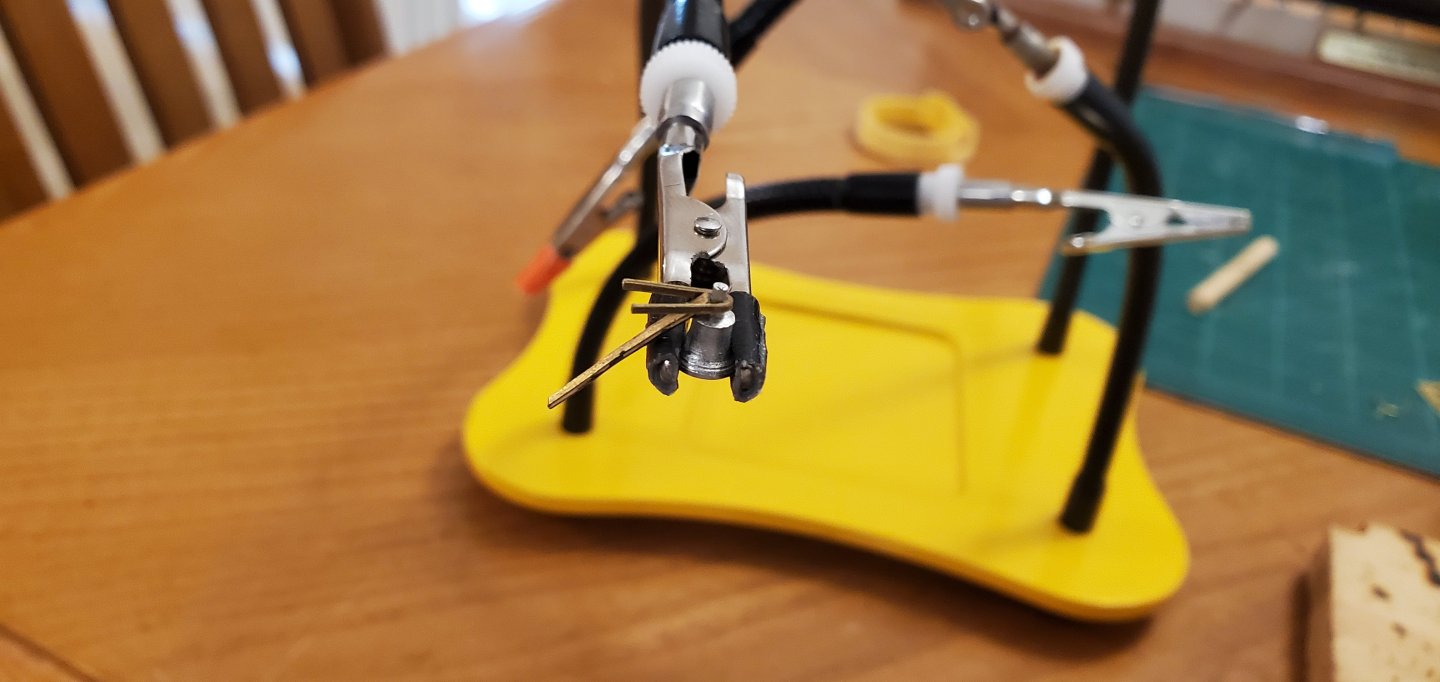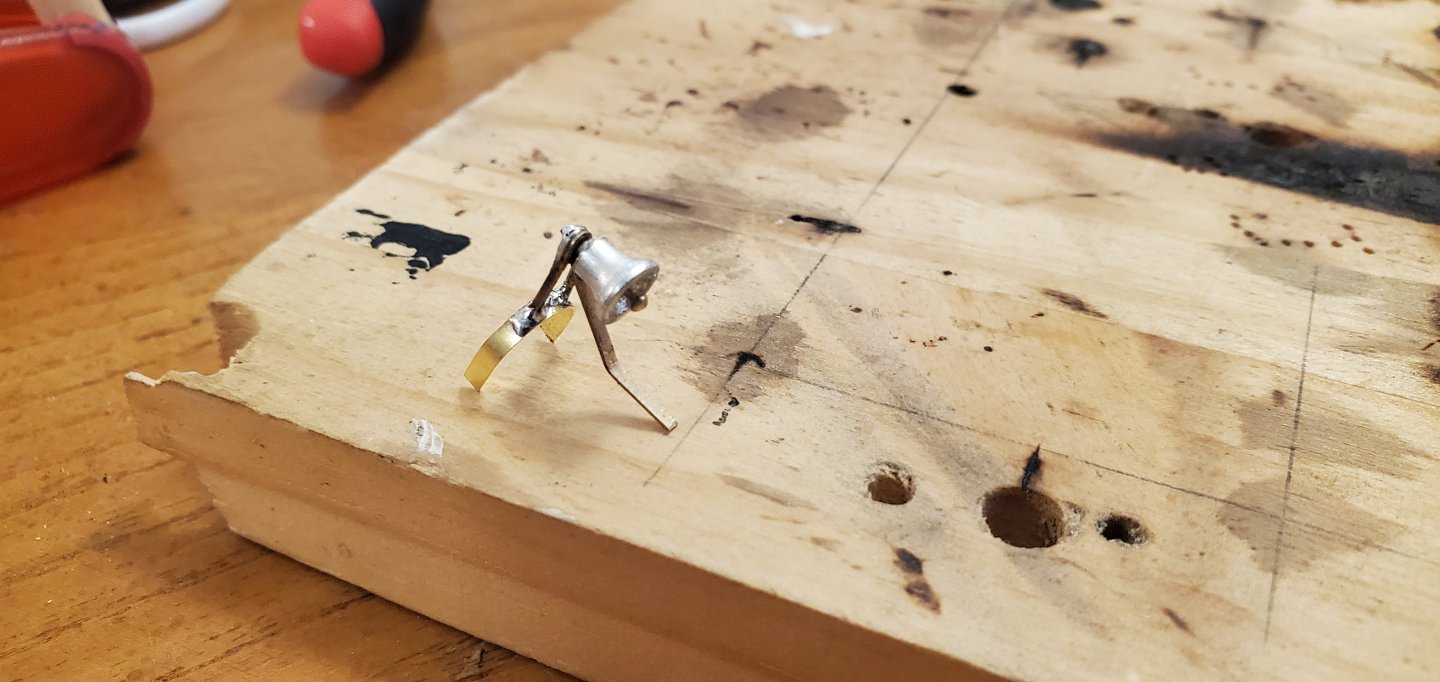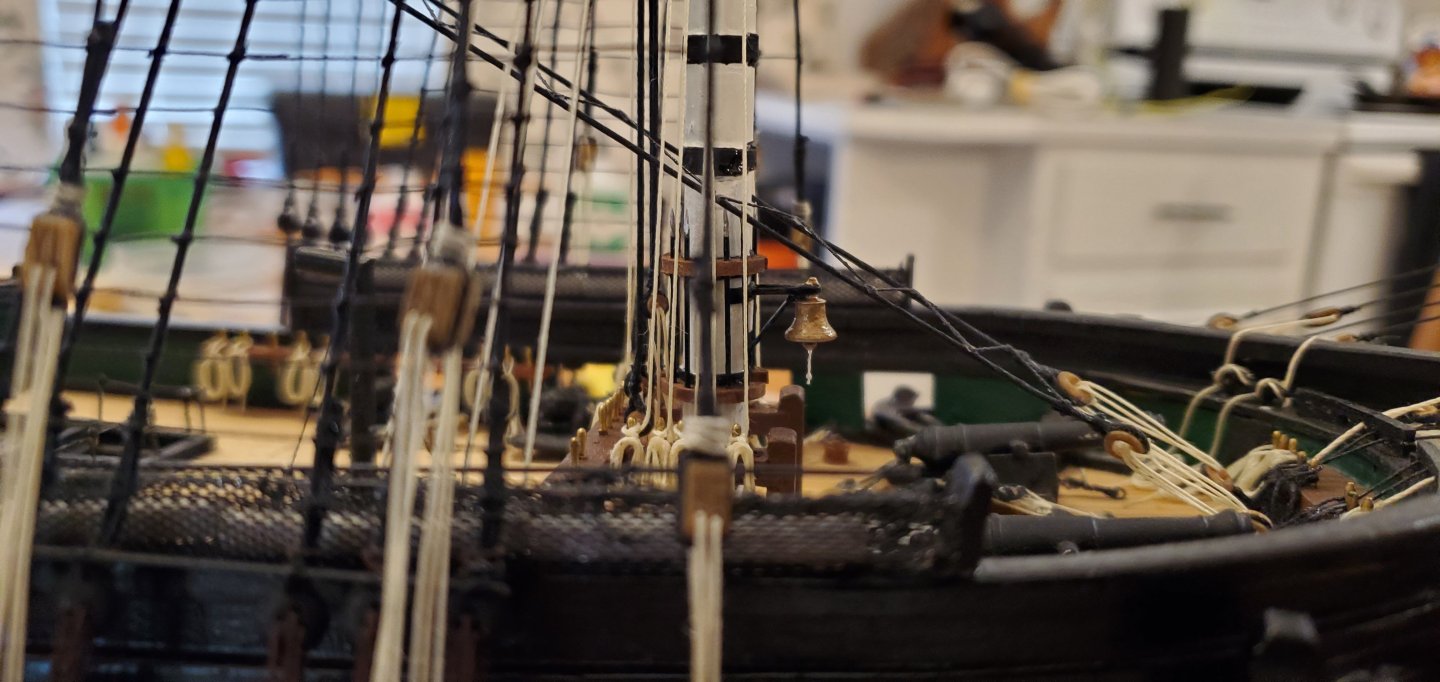-
Posts
1,911 -
Joined
-
Last visited
Content Type
Profiles
Forums
Gallery
Events
Everything posted by Glen McGuire
-
Not that I am biased, but I think it's time for another SIB!! Your Golden Hind is a beauty. You get better and better with each build!
- 46 replies
-
- Golden Hind
- airfix
-
(and 2 more)
Tagged with:
-
Instead of plastic wrap, you might try wax paper. It's easier to handle than thin plastic wrap. That's what I use for similar applications. Regardless, great job on those sails, JC! They really look nice.
- 312 replies
-
- Chile
- Latin America
-
(and 6 more)
Tagged with:
-
Late to the party, but I'm here for the grand finish. Nice work so far. You've done a great job, Bob!
- 46 replies
-
- Golden Hind
- airfix
-
(and 2 more)
Tagged with:
-
Those barrels are tiny, indeed, and look near impossible to drill out. I use veterinary needles (intended for cattle) for my very small SIB cannon barrels. They are cheap and come in a variety of gauges/thicknesses. Something to consider if you want that hollow cannon barrel look. Although the one on deck above looks to have a bit of a taper, which the vet needles do not have.
-
Thank you, Keith! But this SIB will not be going north. She will be making her home on a beautiful 250 acre hill country ranch about an hour west of Austin. I built this one for an old college roommate that wanted something special to give to his wife for a milestone birthday.
- 106 replies
-
- Kentoshi-Sen
- bottle
-
(and 1 more)
Tagged with:
-
The final vote tally was 26 - 2 in favor of the rock. Voters included all you fine people here on MSW as well as assorted family and friends. Thank you for helping me make a difficult decision. Now, about the other suggestions: I'm going to side with Keith on this one. I think the picture that I took distorts the depth perception somewhat and makes that front left part of the rock look more prominent than it really is. If you saw it in person, Roel, I believe you would like it as is. Regarding the moss at the base of the driftwood - as I mentioned above, I really liked that idea. And I also agreed with those of you that suggested it did not need much, just a touch of color to help with the transition. So I used some fake grass leftover from my Archimedes' Claw build and put a few mossy patches around the roots. I didn't think it was quite enough, so I stole some green stuff from a neighbor that does floral arrangements. It's a little bushier than the moss, but I don't think it went overboard. I also did one other thing to help with the visual. In the previous pics, I thought the top surface of the bonsai driftwood looked too much like a mushroom with the bottle balancing on top rather than resting in a cradle like I had envisioned. So I did some pruning on the backside and added some supporting branches at the ends to flatten out the support structure. Here are the final pics: Here's a better angle showing the flattened cradle: Up close and personal with the greenery: Other assorted angles:
- 106 replies
-
- Kentoshi-Sen
- bottle
-
(and 1 more)
Tagged with:
-
Closing out the build log here. My son and I delivered the ship to Carson last night. All the pressure was on my son as he had to hold the model in his lap and not let anything happen to it while I drove the truck. We got it to Carson's house safe and sound (whew!) where he surprised me with two very nice bottles of rum - Chairman's Reserve from St. Lucia and Holmes Cay single cask from Guyana. I thought @BANYAN's Bundy was potent at 37% alcohol by volume but the Holmes Cay is 60%. Whoa! Gonna have to be careful with that one. Now I've got rum from dang near every corner of the world! I just wish I could share a tipple with all of y'all that took part in this fun journey over the past 8 months. Thank you again!
- 301 replies
-
- Constitution
- Bluejacket Shipcrafters
-
(and 1 more)
Tagged with:
-
Javelin, always asking the tough questions! 😃 The answer is that I'm working on it. I really like the idea, so we will see if I can come up with something that looks decent. Thanks to @Thukydides for the original suggestion and the others that seconded it.
- 106 replies
-
- Kentoshi-Sen
- bottle
-
(and 1 more)
Tagged with:
-
Despite a few absentee votes remaining to be counted, the Associated Press has called the race and declared victory for the rock in a landslide! Full disclosure - the rock was my first choice and I was already drilling holes into it to secure the driftwood when the idea for the Zen garden popped into my mind. So I had to explore it. But I guess the golfers are right when they say, "first sight is usually right." Thank you to everyone for not only your vote, but also for including a reason. Everyone looks at something (especially something artistic) from their own unique perspective and I found it fascinating to hear how each of you viewed the 2 different presentations.
- 106 replies
-
- Kentoshi-Sen
- bottle
-
(and 1 more)
Tagged with:
-
I just found your new build log. I'm in for the ride too!
- 44 replies
-
- Nave Egizia
- Amati
-
(and 1 more)
Tagged with:
-
Thank you to everyone for your comments above. Now I'm in a quandary and gotta ask for some help here. Normally, I get an idea in mind about what I want the SIB presentation to look like and I'm rock solid about it. This time, however, I'm waffling. I've got 2 ideas and I cannot decide which I like better. I keep going back and forth, so I thought I'd put it out for a vote on MSW and see which one y'all like better. For the first one, I stuck with the entire Japanese theme from top to bottom - Japanese whiskey bottle, bonsai driftwood cradle, and Japanese Zen garden base. For the second one, I swapped out the Zen garden for a natural rock base (it came from my ranch so there is no Japanese tie). So if you would be so kind, please take a moment to look at the 2 pics below and let me know which one you believe is the better presentation. Thank you for your help!
- 106 replies
-
- Kentoshi-Sen
- bottle
-
(and 1 more)
Tagged with:
-
It's ridiculous how many times that happens. I'm convinced there is an invisible black hole surrounding my work area that those things fall into. Regardless, that is really nice detail you are adding. She is looking good.
- 221 replies
-
I was with Eric and Wefalck at first, but the more I look at it, the less I see dinghy bow. It does look like there's a keel, but it seems to stop abruptly at the black thing. The top end of the black thing looks like it's looped around the end of the keel thing. If it's a keel, you can see the end sticking thru the black thing. That doesn't make sense to me. Could the white thing be a cover of some kind and the black thing is a tie-down? Maybe a dinghy cover? Also, the white doesn't lie flat on the slanted roof, but level with the water. I'm stumped.
-
I've been following your build log and you are doing an incredible job on the Prince. Based on the the work I've seen, I think you'd sail thru a Constitution build just fine. And speaking of the Prince, I actually have that same kit from Constructo (won it in a raffle). Sadly, I've been poaching parts from it for my SIBs and some of this Constitution work. If I do ever get around to building it, your log will be a great resource.
- 301 replies
-
- Constitution
- Bluejacket Shipcrafters
-
(and 1 more)
Tagged with:
-
Thank you so much, Steve. I just noticed you have the historic and unique 15-star flag as your profile pic. Is that a closeup of a Constitution flag? I love that quote, Mark! I had not heard of Mr. Rose so I had to look him up. And I found the entire poem, which I thought was mesmerizing: Ships are the nearest things to dreams that hands have ever made, For somewhere deep in their oaken hearts the soul of a song is laid; A soul that sings with the ship along through plunging hills of blue, And fills her canvas cups of white with winds that drive her through. For how could a nail and a piece of wood, tied with a canvas thread, Become a nymph on moon-washed paths if the soul of the ship were fled? Her bosom throbs as her lover's arms clasp her in fond embrace, And the joyous kiss of briny lips is fresh on her maiden face. No storm can smother the hempen song that wells in her laughing throat— Small wonder then that men go mad for the love of the sea and a boat. For the singing sheet is a siren that tugs at the hearts of men, And down to the sea they must go once more, tho they never come back again.
- 301 replies
-
- Constitution
- Bluejacket Shipcrafters
-
(and 1 more)
Tagged with:
-
As this thoroughly enjoyable adventure comes to a close, I’ve got a lot of thank you’ing to do. First of all, thanks to those directly above for your kind words. I want to give a special thanks to @Keith Black for sending me Carson’s original post on MSW requesting assistance. It has been a real pleasure working on the Constitution for these past 8 months. I have loved every minute of it (except for the ratlines 🤪). It almost makes me want to put down the bottles and do another regular ship model! But we’ll see about that. Next, I want to sincerely thank everyone in the MSW world that followed along on this build. Your advice, tips, critiques, corrections, suggestions and good humor made my work better so much better. So a huge thanks to @Knocklouder, @popeye2sea, @BANYAN, @Ian_Grant, @Coyote_6, @gjdale, @Paul Le Wol, @Bryan Woods, @Javelin, @FriedClams, @Landlubber Mike, @Canute, @SaltyScot, @Thukydides, @tmj, @hollowneck, @JacquesCousteau, @gsdpic, @lraymo, @PvG Aussie, @GrandpaPhil, @gieb8688, @Snug Harbor Johnny, @Bill Morrison, @Desertanimal, @vossiewulf, @ccoyle, @Marcus.K., @CiscoH, @KARAVOKIRIS, @Nearshore, @schooner, @Ryland Craze, @PaddyO, @SiriusVoyager, @DanB, @G.Frost, @eatcrow2, @Auger, @Paryzek, @Jolly Jo, @chris watton, @DanielD, @Zarkon. Whether you were here for each post or just popped in every now and then to have a look, I greatly appreciated your company. You helped to make the build that much more enjoyable. Next, I want to thank @xken, @usedtosail, @robnbill, @KurtH for your superb build logs. I relied on them greatly to help me understand the BlueJacket instructions and figure out some of the trickiest parts of the build. Each of your versions of the Constitution are magnificent. And finally, I want to thank Carson (a.k.a. @Robert in Austin) for entrusting me with a treasured family heirloom. His father, Hollye, was a highly skilled ship modeler and I consider it a real honor that the family allowed me to complete his work. I’ve posted a few pics below, but I believe it’s hard to capture the magnitude of the Constitution with a few snapshots. So I tried making a drone-like video tour of the model. It’s about 4 minutes long and you can view it here if you like. https://www.youtube.com/watch?v=pLITokzun78 Here are the pics: I was truly honored that Carson wanted to include my name along side his father's on the nameplate.
- 301 replies
-
- Constitution
- Bluejacket Shipcrafters
-
(and 1 more)
Tagged with:
-
Welcome to MSW, Andreas! Hope you start a build log for your Virginia Schooner.
-
I'd been waiting for a couple of weeks for the last piece of the puzzle to complete the construction. While the instructions do not call for a bell, most Constitution models I've seen have one secured to the main mast. I ordered one from BlueJacket which I thought would be the right size. It was advertised on their website as simply 1/4". I didn't know if that was height, bell diameter, etc, and the picture on the website was a drawing and not an actual picture. But I figured it would be pretty close to what I needed. Here's what it looked like when I got it. The size was good, but it needed some work to make it worthy of the Constitution. I started by hollowing out the interior. Then I inserted a brass nail (leftover from my Mamoli CSS Alabama) for the clanger. I know it's officially called a clapper, but I think clanger is more descriptive. 😃 Next, I took some leftover brass sprues and soldered together a mounting bracket. So here's where I had to take some artistic license. From what I've seen on other Constitution models, the bell should be attached to the main mast. However, my main mast did not have room for the bell because I took up too much space with the boarding pikes. But the foremast had room, so that's where it went. Here's the bell painted and mounted on the foremast. And with that, I declare the build complete! Oh, and while waiting for the bell to arrive from BlueJacket, I did get the ship mounted onto its base. So the work here is truly done. I will post some final pics tomorrow.
- 301 replies
-
- Constitution
- Bluejacket Shipcrafters
-
(and 1 more)
Tagged with:
About us
Modelshipworld - Advancing Ship Modeling through Research
SSL Secured
Your security is important for us so this Website is SSL-Secured
NRG Mailing Address
Nautical Research Guild
237 South Lincoln Street
Westmont IL, 60559-1917
Model Ship World ® and the MSW logo are Registered Trademarks, and belong to the Nautical Research Guild (United States Patent and Trademark Office: No. 6,929,264 & No. 6,929,274, registered Dec. 20, 2022)
Helpful Links
About the NRG
If you enjoy building ship models that are historically accurate as well as beautiful, then The Nautical Research Guild (NRG) is just right for you.
The Guild is a non-profit educational organization whose mission is to “Advance Ship Modeling Through Research”. We provide support to our members in their efforts to raise the quality of their model ships.
The Nautical Research Guild has published our world-renowned quarterly magazine, The Nautical Research Journal, since 1955. The pages of the Journal are full of articles by accomplished ship modelers who show you how they create those exquisite details on their models, and by maritime historians who show you the correct details to build. The Journal is available in both print and digital editions. Go to the NRG web site (www.thenrg.org) to download a complimentary digital copy of the Journal. The NRG also publishes plan sets, books and compilations of back issues of the Journal and the former Ships in Scale and Model Ship Builder magazines.

